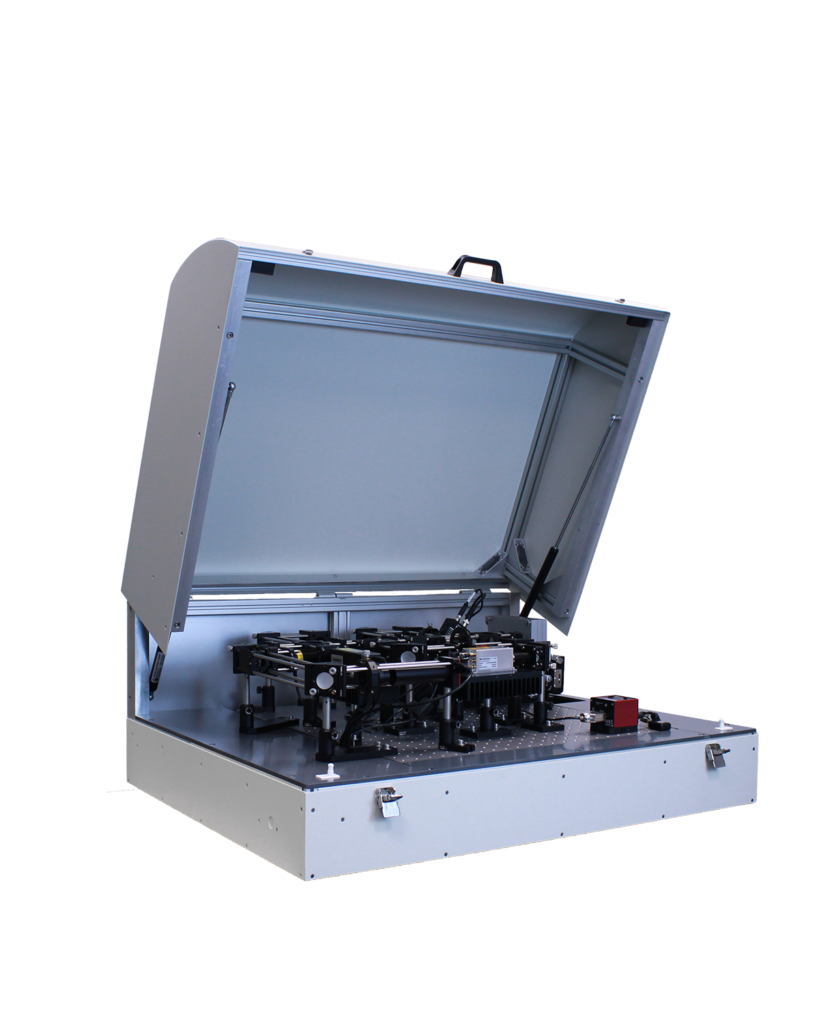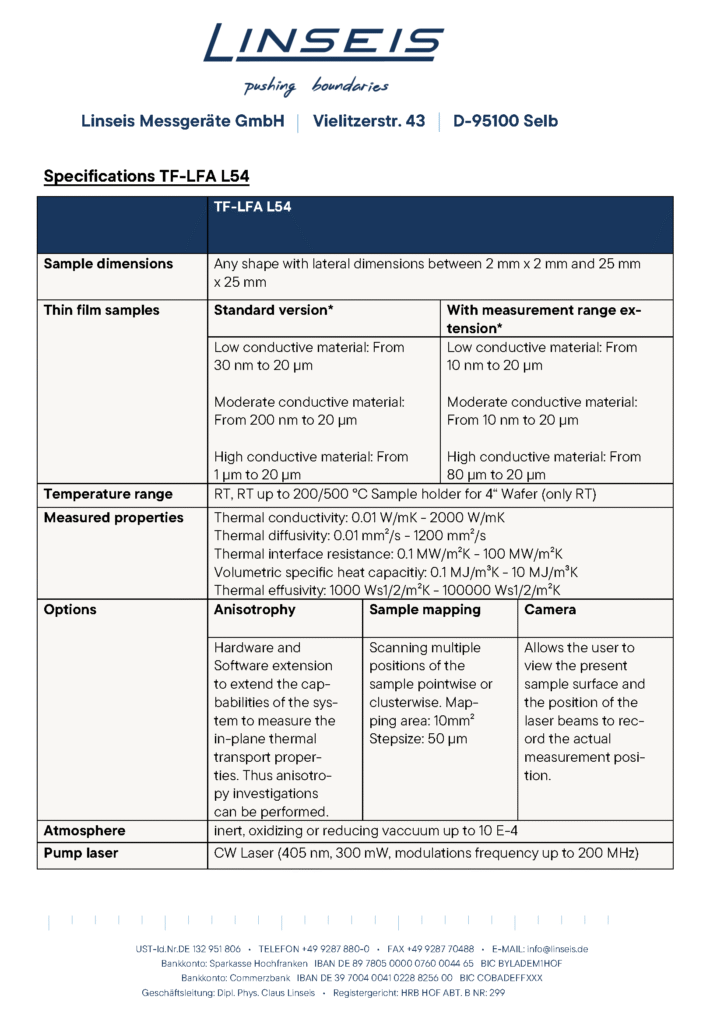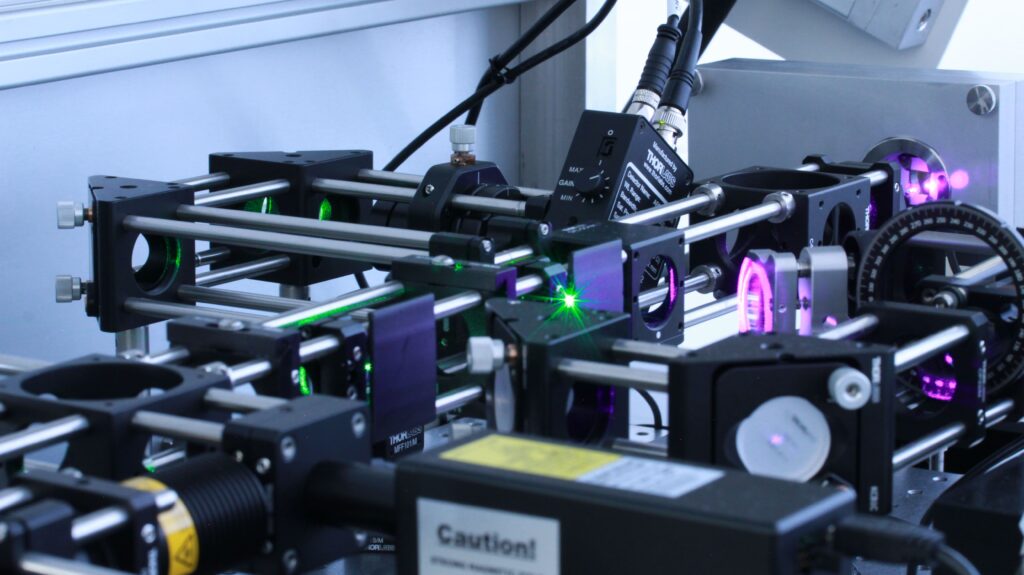TF-LFA L54: Frequency Domain Thermoreflectance for Thin Film Thermal Analysis
The LINSEIS TF-LFA L54 is an advanced laser-based measurement system utilizing the Frequency Domain Thermoreflectance (FDTR) technique for non-contact thermal characterization of thin films and multilayer structures.
It enables the precise determination of thermal conductivity, diffusivity, effusivity, volumetric heat capacity, and thermal boundary conductance — even in ultra-thin layers down to a few nanometers.
Designed for research and high-end industrial applications, the TF-LFA L54 combines exceptional sensitivity, broad temperature capability (from room temperature up to 500 °C), and modular options for anisotropy, sample mapping, and optical visualization.
This innovative system offers outstanding precision, stability, and flexibility, making it ideal for the characterization of semiconductors, coatings, thermoelectric materials, LEDs, and other advanced thin-film technologies.
Unique Features

Optical Technology Upgrade
The TF-LFA L54 applies the Frequency Domain Thermoreflectance (FDTR) method for contactless thermal analysis of thin films.
Key advantages of the FDTR technology include:
Contactless measurement – eliminates mechanical interference and ensures maximum accuracy for delicate or micro-scale samples.
High frequency precision – allows the determination of thermal properties across a broad modulation range for a wide variety of thin-film materials.
Enhanced stability – optimized optical alignment and automatic focusing guarantee reproducible results without manual adjustment.
Wide measurement range – enables analysis of films from a few nanometers up to several micrometers in thickness, at temperatures up to 500 °C.
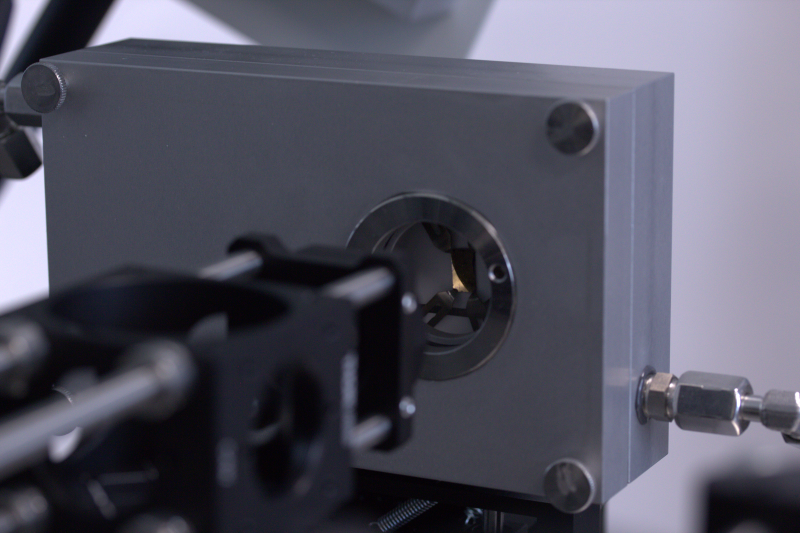
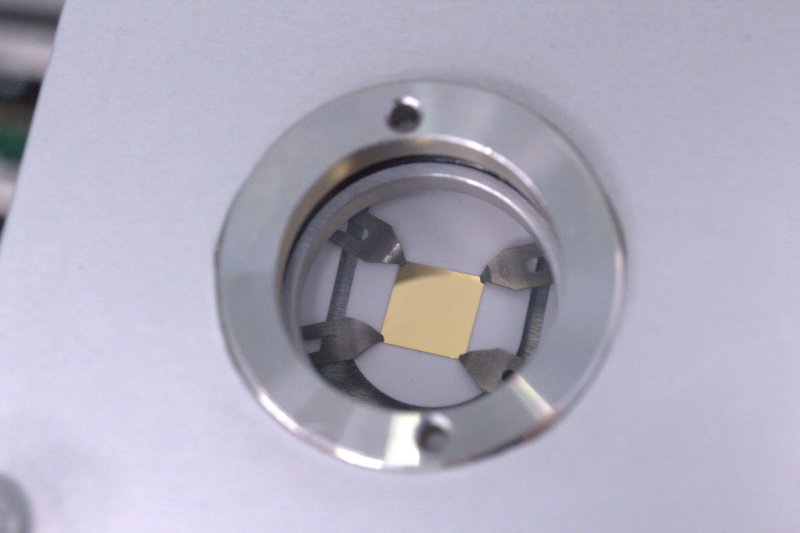
New hardware features
Advanced Optical Design
The TF-LFA L54 features a state-of-the-art dual-laser setup with a modulated pump laser (405 nm) and a continuous-wave probe laser (532 nm) for precise excitation and detection. This optimized configuration ensures maximum signal stability and measurement sensitivity, even for ultra-thin films.
Automatic Focus Adjustment
An integrated auto-focusing system continuously optimizes the laser position during measurement, eliminating manual adjustment and guaranteeing reproducible results for every sample.
Thermal Mapping Function
An optional sample mapping mode allows users to analyze thermal properties across multiple points or areas on the sample surface — ideal for studying inhomogeneous films or verifying coating uniformity.
Integrated Camera System
The optional camera module provides a live view of the measurement area, enabling exact positioning of the laser spot and visual control of the sample surface.
Linseis Lab Link
With Linseis Lab Link, we offer an integrated solution for eliminating uncertainties in measurement results. With direct access to our application experts via the software, you receive advice on the correct measurement procedure and how to evaluate the results. This direct communication ensures optimal results and maximizes the efficiency of your measurements for accurate analysis and research and a smooth process flow.
Dual-Laser Configuration
The TF-LFA L54 features a high-precision dual-laser setup consisting of a modulated pump laser (405 nm) and a continuous-wave probe laser (532 nm).
This configuration enables stable, high-resolution detection of the thermoreflectance signal and ensures accurate thermal measurements even for ultra-thin layers in the nanometer range.
Automatic Optical Alignment
An integrated auto-focusing and alignment system continuously adjusts the laser focus during operation.
This eliminates the need for manual calibration, providing consistent measurement conditions, improved reproducibility, and reduced operator influence.
Highlights
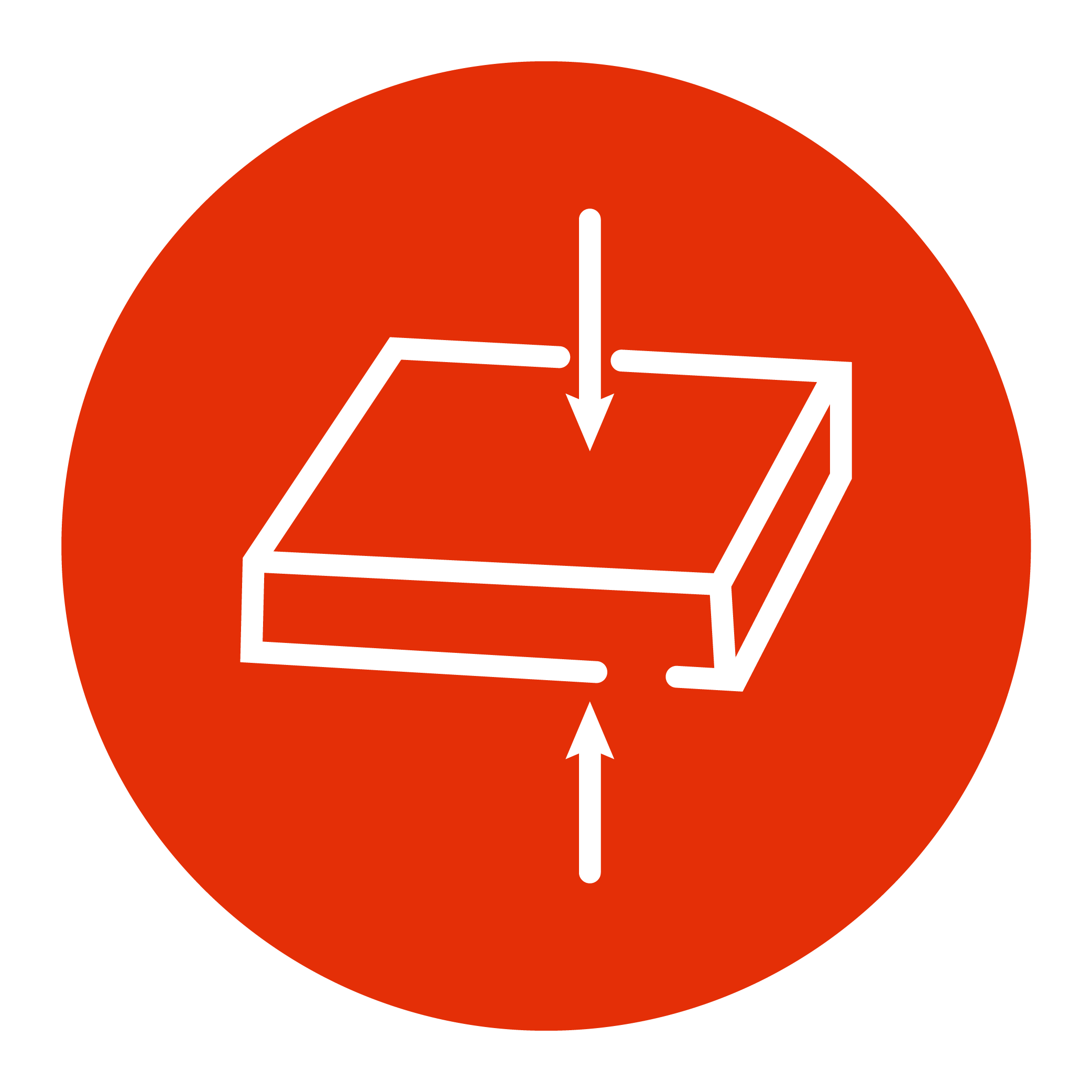



Comprehensive thermal characterization:
- Measurement of thermal conductivity,
heat capacity, thermal diffusivity and
thermal effusivity - Determination of the thermal contact
between two neighboring layers
Anisotropy function:
- Optional function for measuring the thermal
conductivity both in the direction of passage
(through the material) and in the plane
(perpendicular to the laser excitation)
Wide temperature range:
- The device can measure the thermal properties
of thin films at room temperature up to 500°C
Thermal imaging:
- With the optional sample
mapping function, the thermal
properties of the sample can be
tracked over a specific area or
points of the surface, ideal for
homogeneity tests
Automatic optimization and camera option:
- Automatic optimization of the laser beam
to improve the measurement results - Additional camera option that provides
visual information and facilitates the selection
of interesting spots on the sample surface
Measurement of thermal contact
resistances/conductive values:
- Measurement of the thermal
contact between two layers,
e.g. between sample and surface
or sample and transducer layer
Key Features

Contactless Optical Measurement
Using the Frequency Domain Thermoreflectance (FDTR) method, the TF-LFA L54 performs non-contact thermal analysis with laser-based precision — ideal for delicate thin films and microstructures.

Comprehensive Thermal Characterization
The system simultaneously determines thermal conductivity, diffusivity, effusivity, volumetric heat capacity and thermal boundary conductance — without assumptions about density or heat capacity.

Automatic Focus and Alignment
An integrated auto-focusing system continuously adjusts the laser position during operation, ensuring maximum stability, repeatability, and measurement accuracy for every sample.

Integrated LINSEIS platform
The integrated LINSEIS software offers a comprehensive solution that combines hardware and software for maximum process reliability and precision. The standardized platform enables seamless integration of components and devices from external partners – for a particularly robust and reliable overall system.
Questions? We're just a call away!
+1 (609) 223 2070
+49 (0) 9287/880 0
Our service is available Monday to
Thursday from 8 am to 4 pm
and Friday from 8 am to 12 pm.
We are here for you!
Specifications
![]()
Ultra-Thin Film Capability: Analyzes layers from 10 nm to 20 µm

High-Temperature Operation: Measurements up to 500 °C under controlled atmospheres

Wide Measurement Range: Thermal conductivity from 0.01 to 2000 W/m·K
Discover our high-performance TF-LFA – designed for cutting-edge thin-film analysis:
Measurement method: Frequency Domain Thermoreflectance (FDTR) for non-contact, laser-based thermal analysis
Analyzed parameters: Thermal conductivity, diffusivity, effusivity, volumetric heat capacity, and interface conductance
Optical alignment: Dual-laser configuration with automatic focusing for maximum stability and precision
Anisotropy option: Measures in-plane and cross-plane thermal conductivity of multilayer and 2D materials
Thermal mapping: Surface mapping mode for evaluating film homogeneity and coating quality

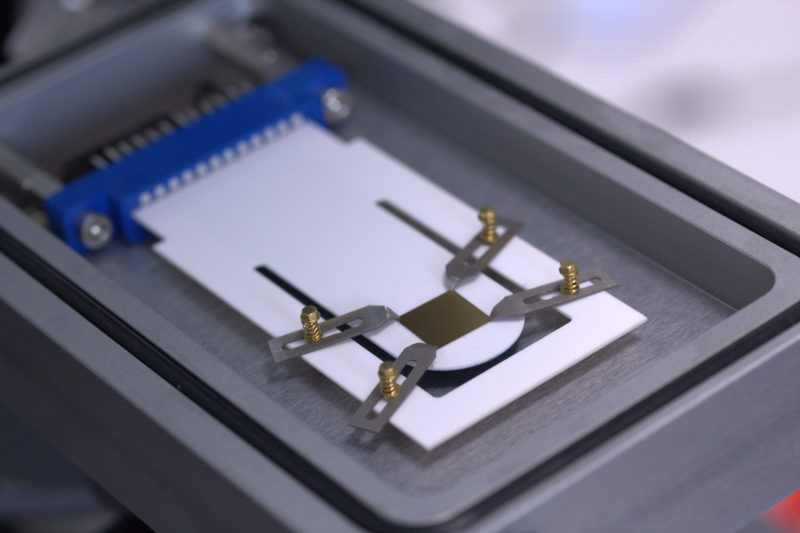
Anisotropy Measurement – Thermal Conductivity in All Directions
The TF-LFA L54 enables the precise determination of thermal conductivity anisotropy — measuring both in-plane and cross-plane heat transport within thin films and multilayer structures.
This capability is essential for advanced materials such as semiconductors, thermoelectrics, 2D crystals and battery components, where heat flow direction critically affects performance and reliability.
Using the Frequency Domain Thermoreflectance (FDTR) technique, the system provides non-contact, direction-specific data with exceptional accuracy, allowing researchers to fully understand and optimize the thermal behavior of complex, anisotropic materials.
Thermal conductivity anisotrophy
In the development of modern batteries and electronic components, the direction of heat flow is a key factor for performance and safety.
Since thermal conductivity can vary with direction in a material – a phenomenon known as anisotropy – it is crucial to distinguish between in-plane (parallel to the surface) and cross-plane (perpendicular to the surface) heat transport.
In-plane conductivity is vital for efficient heat spreading across battery or semiconductor layers, while low cross-plane conductivity is desirable in thermal barrier coatings such as SiO₂ thin films, which protect sensitive components.
Two-dimensional materials like PdSe₂ exhibit strong anisotropy, offering promising opportunities for energy conversion and advanced thermal management.
To fully exploit these materials, direction-dependent thermal investigations are essential.
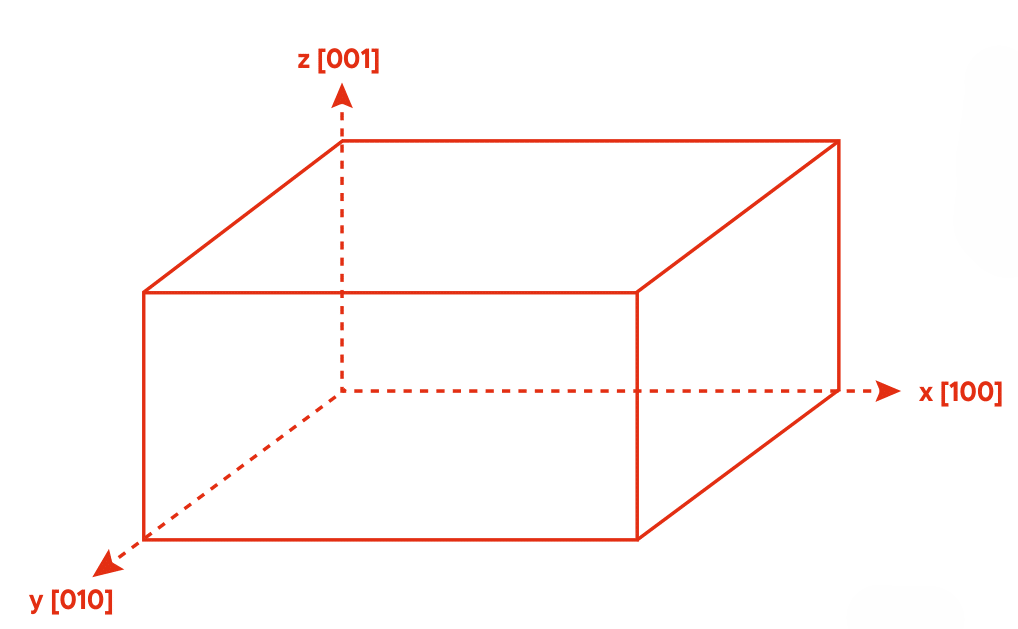


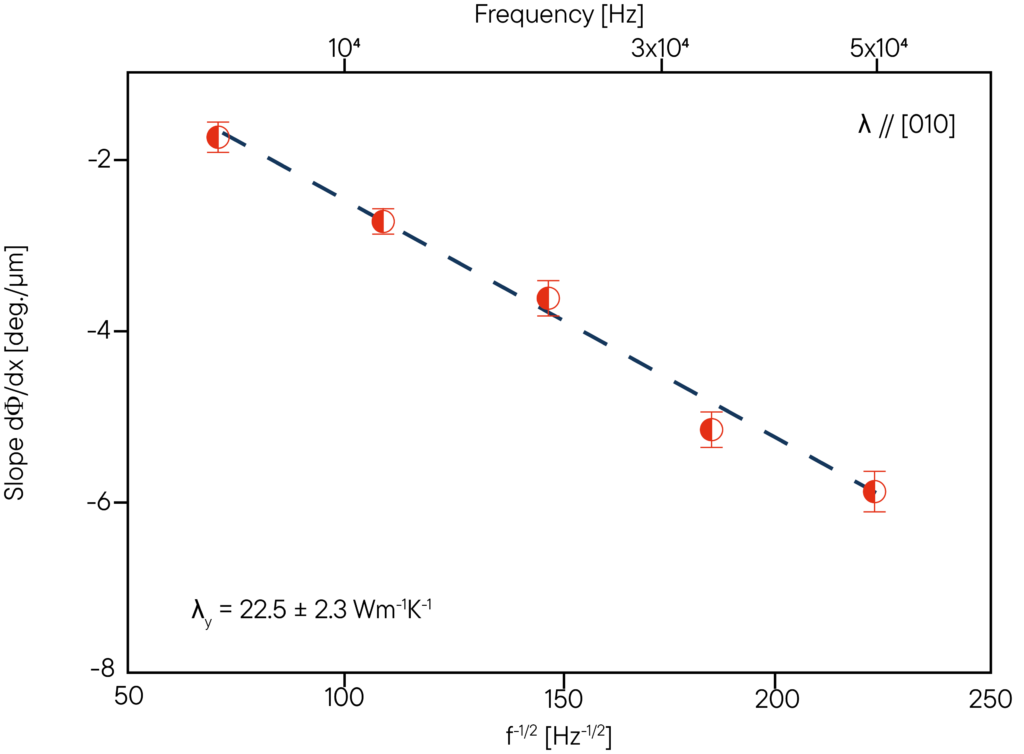
Figure 2: Out-of-plane and in-plane thermal conductivity of a 297 nm thick PdSe2.
The TF-LFA offers the possibility to measure the thermal conductivity of such a 2D Material not only in both
major directions, in- and out-of-plane, (see Fig. 2 b & 2 c) even over the axis of rotation of the surface in two
different crystallographic planes.
*Measurements were provided by Dr. Juan Sebastian Reparaz
Method
Frequency Domain Thermoreflectance (FDTR)
The Frequency Domain Thermoreflectance (FDTR) technique is an optical, non-contact method for determining thermophysical properties of thin films and multilayer structures.
It measures the thermal response of a material’s surface to a harmonically modulated laser excitation, allowing precise analysis without mechanical contact or destructive preparation.
In this method, a pump laser periodically heats the surface of the sample, while a probe laser detects minute changes in reflectivity caused by temperature variations.
The phase shift between heating and response provides detailed information about thermal conductivity, diffusivity, effusivity, volumetric heat capacity and thermal boundary conductance.
By evaluating the signal in the frequency domain, the TF-LFA L54 eliminates experimental errors related to pulse duration or optical alignment, ensuring high measurement stability and accuracy.
This makes FDTR ideal for thin films, coatings, semiconductors, thermoelectric materials and 2D structures, where conventional contact-based techniques reach their limits.

Functional Principle of the TF-LFA L54
The TF-LFA L54 determines the thermophysical properties of thin films and multilayer structures using the Frequency Domain Thermoreflectance (FDTR) method – a fully optical, non-contact technique based on laser modulation and reflection measurement.
During the measurement, a modulated pump laser periodically heats the surface of the sample, while a probe laser monitors tiny reflectivity changes caused by the resulting temperature fluctuations.
The phase shift between the thermal excitation and the reflected signal is recorded with high precision and evaluated using a frequency-dependent heat transport model.
From this data, the TF-LFA L54 calculates key parameters such as thermal conductivity, diffusivity, effusivity, volumetric heat capacity, and thermal boundary conductance.
This approach enables accurate, reproducible, and non-destructive characterization of thin films, coatings, and layered materials – even in cases where conventional contact methods are not suitable.
Measured variables with Frequency Domain Thermoreflectance (FDTR)
Possibilities of thin-film analysis using the TF-LFA L54:
Thermal conductivity (λ) – quantifies the ability of the thin film or multilayer to conduct heat.
Thermal diffusivity (α) – describes how quickly heat propagates through the material.
Volumetric heat capacity (ρ·cp) – represents the amount of heat stored per unit volume and temperature change.
Thermal effusivity (e) – indicates how efficiently the film exchanges heat with its surroundings.
Thermal boundary conductance (TBC) – measures the heat transfer efficiency between layers or interfaces.
Anisotropic conductivity – distinguishes between in-plane and cross-plane heat transport in anisotropic materials.
Temperature-dependent behavior – analysis of property changes up to 500 °C under controlled atmospheres.
Questions? We're just a call away!
+1 (609) 223 2070
+49 (0) 9287/880 0
Our service is available Monday to
Thursday from 8 am to 4 pm
and Friday from 8 am to 12 pm.
We are here for you!
TF-LFA L54 explained - function, use and capabilities
What are thin films and where are they used?
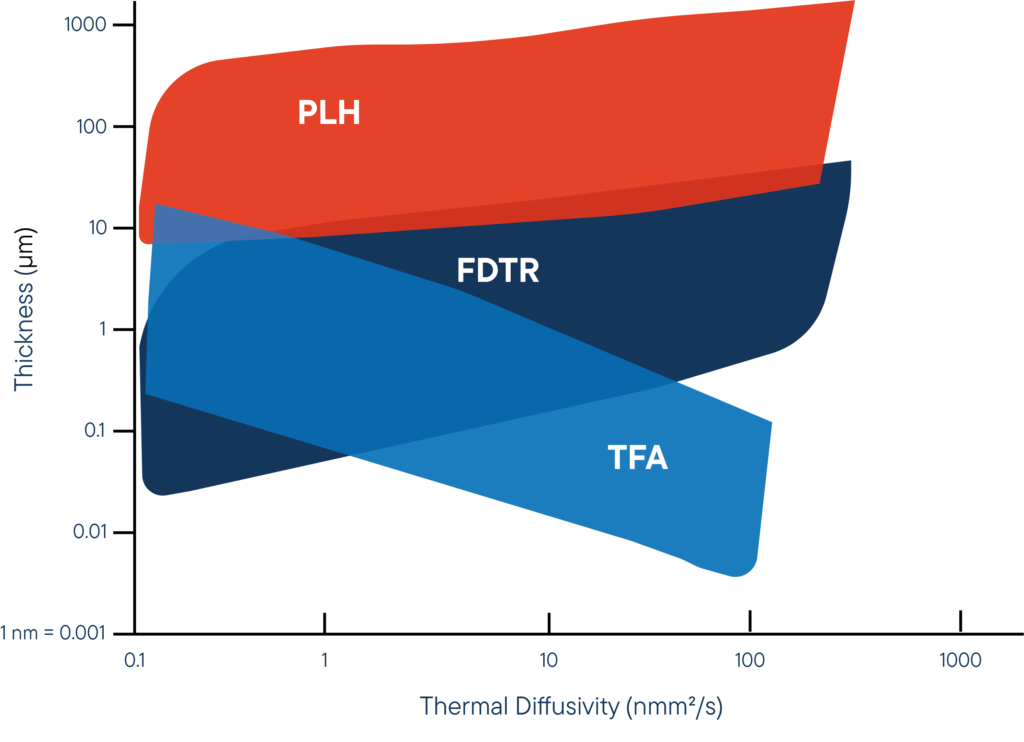
Thin films:
Thin films are materials with thicknesses from nanometers to micrometers, applied to surfaces.
Their thermophysical properties differ significantly from those of bulk materials depending on thickness and temperature. Thin films are typically used in semiconductors, LEDs, fuel cells, and optical storage media.
Different types of thin films
- Thin film: layer of a few nm to µm
- Films are grown on specific substrate
- Typical growing techniques include
- PVD (e.g. sputtering, thermal vaporization)
- CVD (PECVD, LPCVD, ALD)
- Drop casting, Spin coating & Printing
- Various kinds of films, including:
- Semiconducting films (e.g. thermoelectric, sensors, transistors)
- Metallic films (used as contacts)
- Thermal barrier coatings
- Optical coatings
How does FDTR compare to TDTR?
Our advanced FDTR (Frequency-Domain Thermoreflectance) system offers significant advantages over the traditional TDTR (Time-Domain Thermoreflectance) method, optimizing the setup and enhancing measurement stability.
No need for probe laser adjustment: Unlike the TDTR arrangement, where the probe laser must be adjusted relative to the sample due to slight changes in reflection when the sample is altered, our FDTR system eliminates this requirement. Our system includes automatic focusing, which continuously adjusts the probe laser‘s focus to accommodate any changes in the sample, ensuring optimal measurement conditions without manual intervention
Aligned lasers: With perfectly aligned lasers in our FDTR system, there is no need to adjust the probe laser beam, resulting in a simpler sample setup and more stable measurements.
Broader measuring range: Our FDTR outperforms even nano-pulsed TDTR setups with a broader measuring range. Thinner samples layers and thin films with higher thermal conductivity can be measured.
No need for assumptions: Our comprehensive evaluation algorithm allows you to measure thin films without any assumptions. All you need to know is the sample thickness
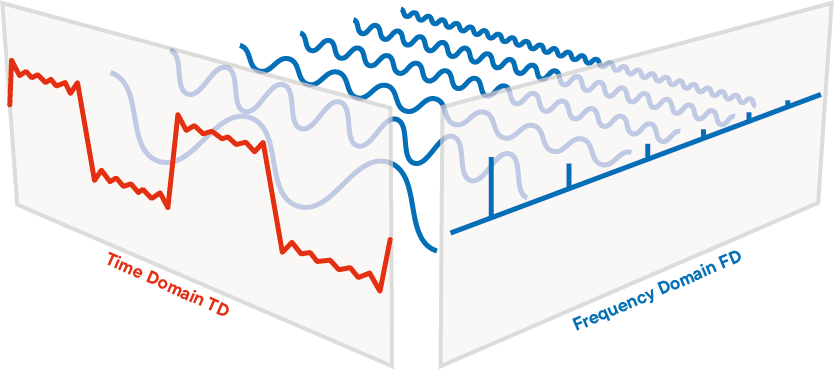
Advantages:
- Broader measuring range
- Easier handling
- Higher stability
- More precise results
- Ability to measure thermal contact resistance between two
layers - No need for assumptions about
heat capacity and density of thin
sample films
What is a multilayer sample in thin-film analysis?
Multilayer sample

Thin film
(e.g. semiconductor, metal, organic, oxide)
Substrates
(e.g. Si, Si3N4, Fused Silicia)
What is the difference between the 3-Omega and Thermoreflectance (pump-probe) methods?
The 3-Omega method is an electrothermal technique in which a metal strip serves simultaneously as heater and temperature sensor. A current at frequency ω induces a periodic heating; the resulting voltage component at 3ω is used to evaluate thermal conductivity, diffusivity and specific heat of thin layers or bulk materials on a substrate.
In contrast, the Thermoreflectance / Pump-Probe methods (e.g., Time-Domain Thermoreflectance (TDTR) or Frequency-Domain Thermoreflectance (FDTR)) are optical and non-contact: a modulated or pulsed pump laser heats the sample, and a probe laser monitors changes in reflectivity (thermoreflectance) to follow temperature dynamics and extract thermal transport properties.
Key practical differences:
Surface quality and coatings matter: Pump-probe techniques require deposition of a metal transducer layer (for thermoreflectance) and benefit from optically clean surfaces. 3-Omega uses patterned metal heaters on the sample.
Substrate and coating interplay: 3-Omega often uses a heater on the substrate/film for in-plane or cross-plane measurement; thermoreflectance is highly sensitive to interface and thin film layers and works with very thin films.
Handling: Optical methods allow non-contact measurement and are suitable for small/thin layers; 3-Omega requires patterning and electrical connection.
Thus, choose based on film thickness, substrate/coating design and surface preparation.
What sample types can be measured by which technique? (manufacturing method, temperature range, handling, substrate etc.)
Different measurement principles are suited to different sample types:
3-Omega method: Suitable for thin films on substrates (film thickness from nanometres to micrometres) or bulk substrates with patterned heaters. Works for multiple deposition methods (PVD, CVD, spin-coating) so long as a heater/sensor element can be applied. It may require specific sample preparation and substrate geometry.
- Thermoreflectance (Pump-Probe / FDTR / TDTR): Ideal for ultra-thin films (10 nm to several µm) and multilayer stacks, deposited on substrates using techniques such as PVD, CVD, ALD, spin-coating, drop-casting. For example the TF-LFA L54 supports films from 10 nm up to ~20 µm. Temperature range: For optical methods, measurement temperature can range from room temperature up to ~500 °C (depending on device) under inert, oxidising or reducing atmospheres. Handling: Optical methods require clean surfaces, deposition of transducer layers, and good substrate/film contact. 3-Omega requires patterned heaters and sometimes suspended membranes for in-plane measurement.
Thus the choice depends on film thickness, substrate type, temperature range and required measurement direction.
In-Plane vs Cross-Plane – Which technique can be used for which and which is more sensitive?
In-Plane measurement refers to heat transport parallel to the surface of a film or substrate.
Cross-Plane measurement refers to heat transport perpendicular to the film/substrate surface (through thickness).
In terms of technique:
For thin films and multilayers, both directions matter because anisotropy often occurs.- 3-Omega can be configured for both in-plane and cross-plane measurements, e.g., a heater on a suspended membrane gives in-plane data; differential 3-Omega on film+substrate gives cross-plane.
- Thermoreflectance (FDTR / TDTR) is typically highly sensitive in the cross-plane direction because reflectance changes monitor temperature dynamics normal to the surface; for in-plane thermal conductivity additional configurations or modifications may be needed.
Hence: For accurate cross-plane thermal conductivity, thermoreflectance methods are particularly effective.
For in-plane measurement, 3-Omega remains a strong choice (especially when films are patterned or suspended).
The sensitivity depends on film geometry, measurement setup and signal-to-noise — optical methods offer very high sensitivity for thin films and interfaces.
How much does an TF-LFA L54 cost?
The price of an TF-LFA L54 system depends on the selected configuration and additional options, such as the temperature range, furnace type, cooling system, automation features, or specialized measurement modes. Since each system can be tailored to your specific application requirements, the cost can vary significantly.
For an exact quotation, please use our contact form to send us your requirements – we will be happy to prepare a customized offer for you.
What is the delivery time for an TF-LFA L54?
The delivery time for an TF-LFA L54 largely depends on the chosen options and configuration. Additional features such as special furnaces, extended temperature ranges, automation, or custom adaptations may increase production and preparation time and therefore extend the delivery period.
Please contact us via our contact form to receive an accurate delivery time estimate based on your individual requirements.
Software
Making values visible and comparable
General Software
All LINSEIS thermal analysis instruments are fully PC-controlled and operate under Microsoft® Windows® environments.
The software suite is divided into three intuitive modules — temperature control, data acquisition, and data evaluation — ensuring seamless operation from setup to final analysis.
Developed in collaboration with our application specialists, the LINSEIS software combines ease of use, data security, and comprehensive functionality for efficient daily operation.
Key features include:
Full compatibility with MS® Windows™
Automatic data protection in the event of power loss
Real-time evaluation of ongoing measurements
Curve comparison and overlay of multiple datasets
Storage, export, and import of data in ASCII or Excel format
Evaluation and Measuring Software
The evaluation software provides advanced tools for detailed thermal analysis of thin films and multilayer systems.
Using a multilayer heat transport model, it simultaneously determines thermal conductivity, diffusivity, effusivity, and volumetric heat capacity, while also enabling contact resistance determination, sensitivity plotting, and feasibility checks for each experiment.
The measuring software ensures fully automated operation with easy, user-friendly input for all measurement parameters.
It guarantees precise temperature control, reproducible results, and optimal workflow — from experiment setup to complete thermal property extraction.
LINSEIS Thermal Library
The LINSEIS Thermal Library software package is an option for the well-known, user-friendly LINSEIS Platinum evaluation software, which is integrated in almost all our devices. The Thermal Library allows you to compare the complete curves with a database containing thousands of references and standard materials in just 1-2 seconds.
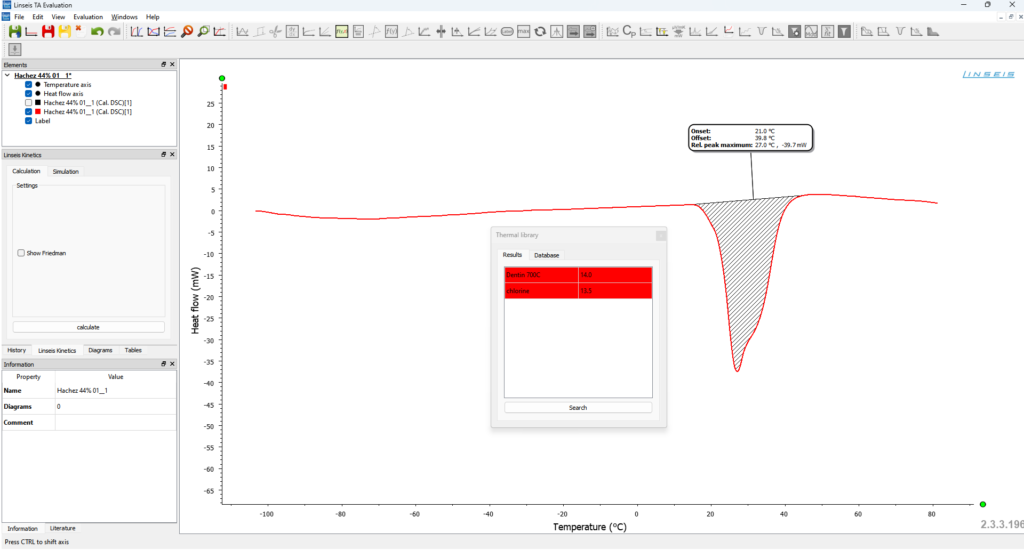
Multi-instrument
All LINSEIS instruments DSC, DIL, STA, HFM, LFA, etc. can be controlled via a software template.
Multilingual
Our software is available in many different user-interchangeable languages, such as: English, Spanish, French, German, Chinese, Korean, Japanese, etc.
Report generator
Convenient template selection for creating individual measurement reports.
Multi-user
The administrator can set up different user levels with different rights to operate the device. An optional log file is also available.
Kinetic software
Kinetic analysis of DSC, DTA, TGA, EGA (TG-MS, TG-FTIR) data to investigate the thermal behavior of raw materials and products.
Database
The state-of-the-art database enables simple data management with up to 1000 data records.
Applications
Thin Films
In modern thin-film systems — such as semiconductors, LEDs, fuel cells, or optical storage media — thermal transport properties differ significantly from those of bulk materials.
Reduced thermal conductivity often results from effects such as interface scattering, impurities, grain boundaries, or thickness-dependent behavior.
The LINSEIS TF-LFA L54 applies the Frequency Domain Thermoreflectance (FDTR) technique, enabling non-contact, high-precision thermal analysis of thin films and multilayer structures ranging from a few nanometers to several micrometers.
It determines key parameters such as thermal conductivity, diffusivity, effusivity, volumetric heat capacity, and thermal boundary conductance, providing crucial insights into heat transport, layer interfaces, and material performance.
With its optical precision and advanced data evaluation models, the TF-LFA L54 is the ideal instrument for research and quality control in thin-film development, ensuring optimized thermal management in next-generation materials and devices.
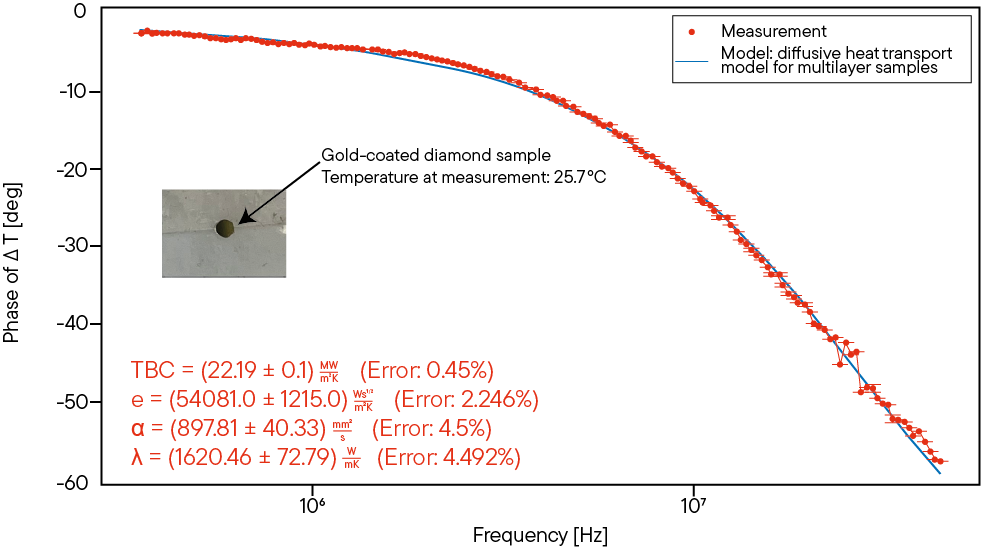
Application example: CVD Diamond – Thermal Conductivity
High-conductivity diamond samples can be measured using the Linseis Laser Frequency Analyzer (TF-LFA L54), which utilizes the Frequency Domain Thermoreflectance technique to characterize thermal behavior and ensure quality control in applications where efficient heat dissipation is critical. Accurate thermal conductivity measurements are essential to verify the quality and performance of diamond samples, as factors such as grain size, purity, and thickness can influence the transport properties.
Measurement of the thermal properties of CVD diamond. The x-axis displays the logarithmically scaled frequency in Hertz, while the y-axis represents the phase shift between the excitation by the pump laser and the probe laser. Where λ is the thermal conductivity, α is the thermal diffusivity, e is the thermal effusivity and TBC is the thermal boundary conductance between the transducer layer (gold) and the sample (diamond). It determines how well a combination of materials is able to exchange heat with each other.
Frequency Domain Thermoreflectance (FDTR) is a preferred method for measuring thermal conductivity in materials like CVD diamond, especially in thin films and micro-scale samples where high spatial resolution is essential. The Linseis Laser Frequency Analyzer (TF-LFA) is an ideal tool for this purpose. FDTR uses a modulated laser to induce localized heating in the sample and measures the material‘s thermoreflectance response
at varying modulation frequencies. This technique allows researchers to determine thermal conductivity by modeling the heat flow through the diamond and its interfaces.
Application example: SiO2 thin film 504 nm
Thin film glass layers out of pure silicon dioxide (Quartz) are frequently used in semiconductor and electronic industries as protective layer or thermo or electronical insulation layers. In this example SiO2 layer was investigated using the Linseis TF-LFA device to fully characterize its thermal properties.
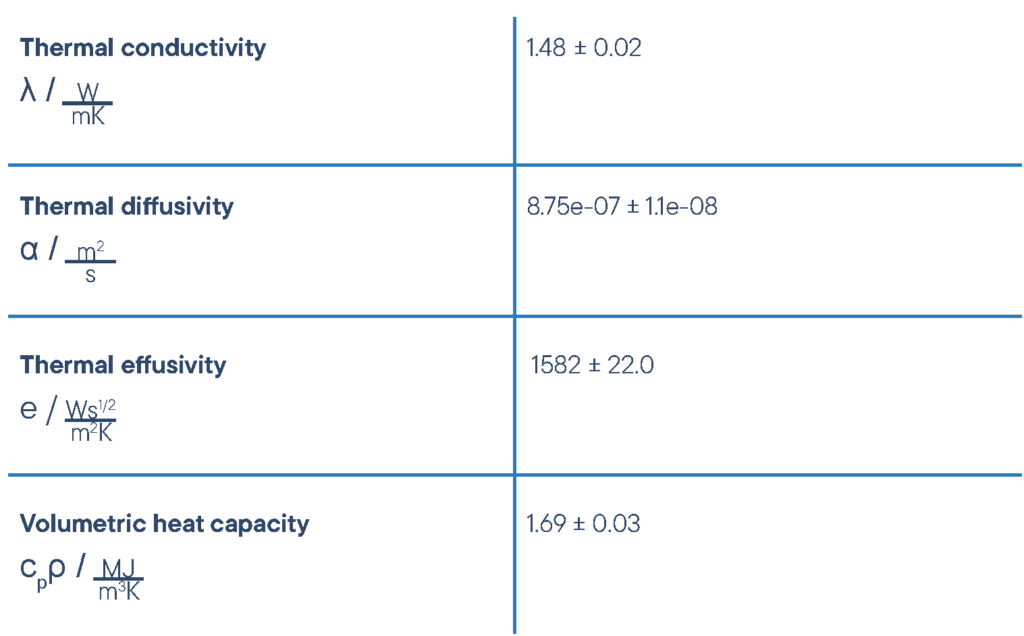
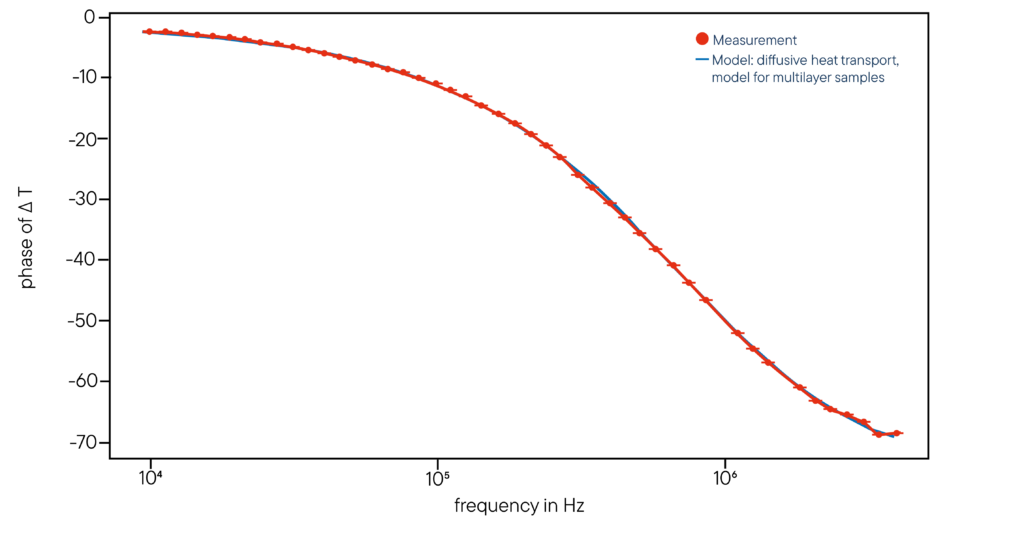
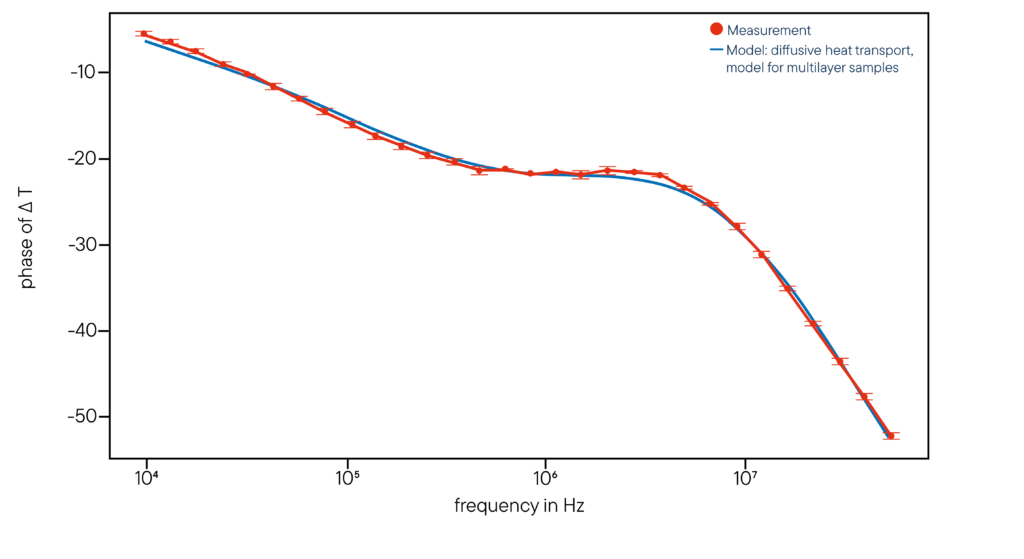
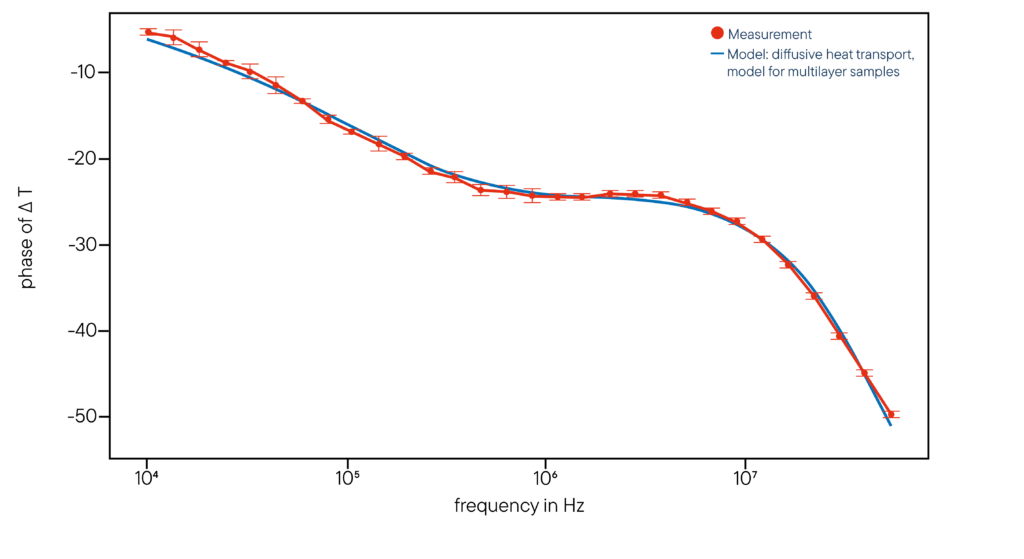
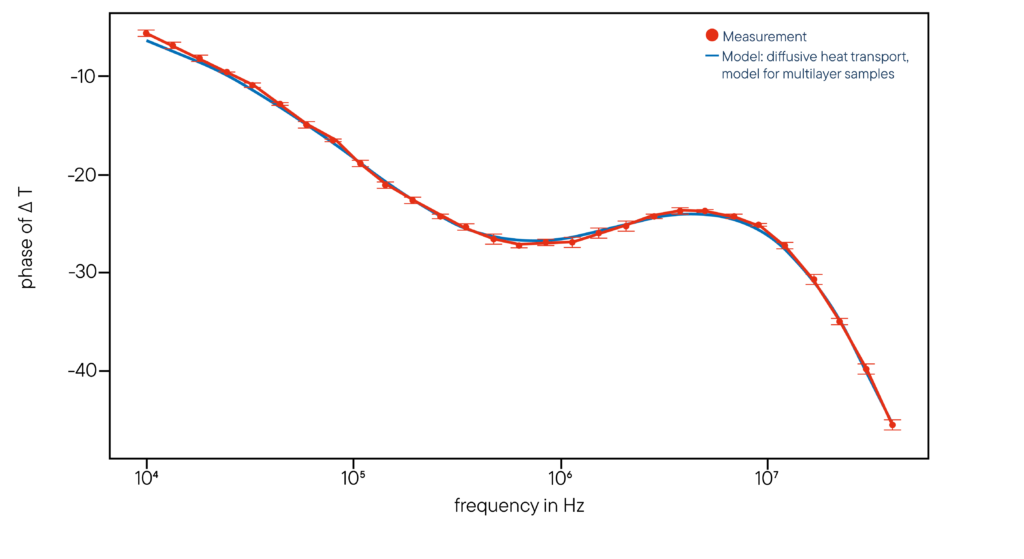
Application example: Aluminum nitride AIN
AlN is frequently used as thermal insulation layer or electronical insulation layer in sensors or microelectronics. Its thermal properties depending on layer thickness were investigated by TF-LFA in this application.
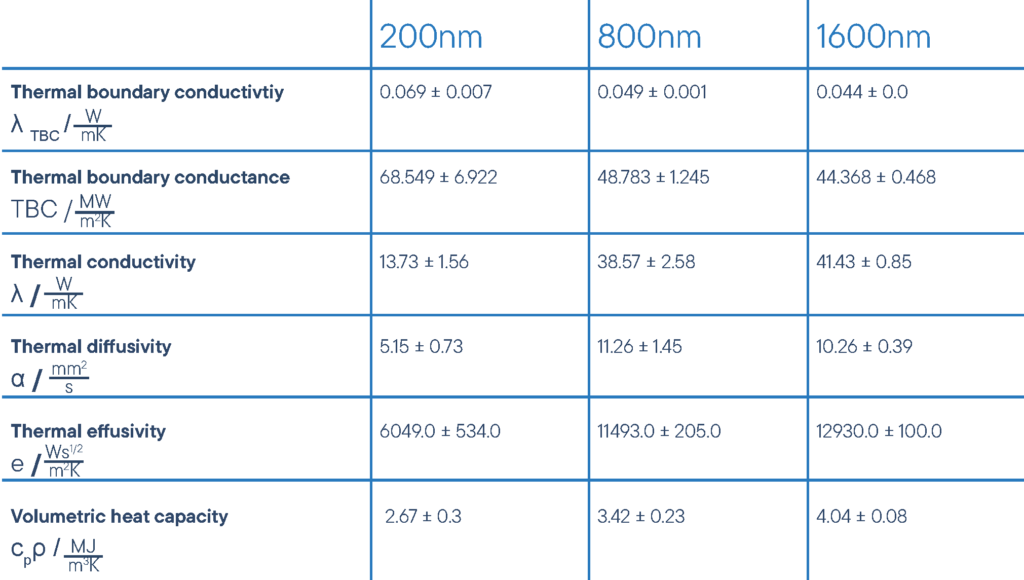
Well informed
